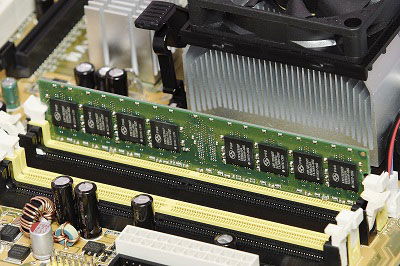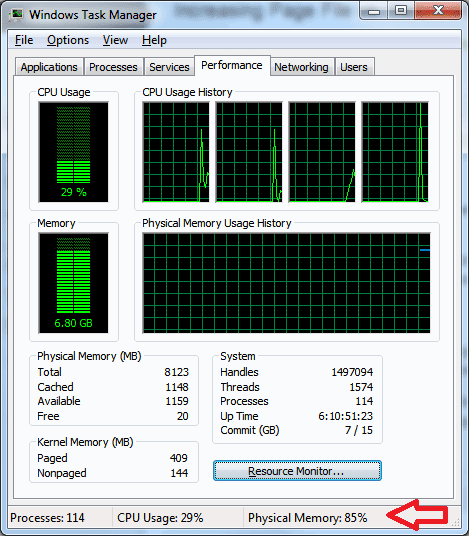People with low-performance computers complain about how slow they are after using them for a few days. This happens because the computer is using up all of its RAM in programs. Your hard drive, however, can also participate by adding to your RAM pool with its page file. If you increase the size of your page file, you have more memory to work with. But is this a good idea? It’s free, but it could cost you in some ways. Let’s discuss whether you should increase your page file or increase your RAM.
What Is The Page File?
The page file is something that exists within every hard drive in which the operating system (Windows, in this case) is installed. In Linux, something similar exists (known as swap). In fact, there’s virtually no operating system that functions without such a phenomenon.
What’s a page file? It’s a set of data in the hard drive assigned with the purpose of adding memory to the computer. Memory that programs occupy will sometimes enter this page file. It’s your computer’s way of coping with the limitations of a small amount of RAM. Even systems with generous amounts of RAM still use their page files (mine’s currently using half its 15 GB page file).
Page File vs. RAM

Increasing your page file may help solve some problems. If both your page file and RAM are full, increasing the size of the page file is the most immediate thing you can do to cut your computer some slack. Sometimes this makes the system run faster, but that’s only because you might have put your page file in a less-fragmented part of the hard drive (in other words, you put it in the most free physical location).
The truth is that increasing your page file can do very little to your computer. The reason for this is because that’s probably what’s slowing down your computer in the first place. Check how much RAM is occupied by accessing the task manager (Ctrl + Shift + Esc) and looking at the bottom.

If your memory is anywhere above 95%, your computer’s now principally relying on the page file to continue operating. This is not a healthy thing since the hard drive has moving parts and it takes a longer time for the CPU to access the data. Because of this, you get the slow speeds.
So the answer is, increasing page file does not make the computer run faster. it’s more imperative to upgrade your RAM! If you add more RAM to your computer, it will ease up on the demand programs are putting on the system. Of course, closing RAM-hungry programs also helps. Getting rid of malware is essential, since such things could also be taking a bite out of your computer’s resources.
The next question is, when should you increase the page file? Usually, Windows takes good care of your page file. It automatically sets this up at a quantity that’s complementary to the amount of RAM installed on your computer. That said, the magic number is 2. In other words, you should have at most twice as much page file memory as RAM. So, if you have 4 GB of RAM, you should have an 8 GB page file. If that’s not enough for you, get more RAM!
Note: If you have 16GB, or 32GB of RAM in your system, it is probably pointless to increase your pagefile to 32GB or 64GB. You are simply wasting the space as it won’t be utilized completely most of the time. In short, set your pagefile to twice the RAM size for 8GB or less. After that, setting it to 8GB (or 16GB) is sufficient.
Conclusion
While adding to your page file may solve a problem temporarily, it often creates more problems than it solves. It’s better to get to the root of the situation, which is your lack of RAM memory.
Image credit: Memory by BigStockPhoto
Miguel has been a business growth and technology expert for more than a decade and has written software for even longer. From his little castle in Romania, he presents cold and analytical perspectives to things that affect the tech world.
Subscribe to our newsletter!
Our latest tutorials delivered straight to your inbox
Sign up for all newsletters.
By signing up, you agree to our Privacy Policy and European users agree to the data transfer policy. We will not share your data and you can unsubscribe at any time. Subscribe
